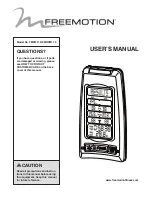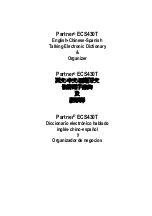
MIDI
MIDI stands for Musical Instrument Digital Interface. This is a world-wide standard communication interface
that enables electronic musical instruments and computers (of all brands) to communicate with each other so
that instructions and other data can pass between them. This exchange of information makes it possible to
create a system of MIDI instruments and devices that offer far greater versatility and control than is available
with isolated instruments. Whether you interface with computers, sequencers, expanders or other keyboards
your musical horizons will be greatly enhanced.
MIDI CONNECTION
The MIDI terminals are located on the back panel of the piano.
1.
MIDI IN
: This terminal receives MIDI data from an external MIDI device.
2.
MIDI OUT
: This terminal transmits data from this instrument to other
MIDI devices. The transmitted data includes the note and touch velocity
produced while playing on the keyboard as well as voice changes, and
playback for the recorded tracks. Demo songs are not transmitted.
NOTE: For more information regarding transmitted MIDI data, please see
the MIDI implementation chart on the next page.
MIDI CHANNEL:
The MIDI system in this unit has 16 channels numbered from 1-16. Each of the channels
is responsible for a voice. When the instrument receives MIDI information from an external device, the active
channel is determined by the control message. The transmission channels on this keyboard are fixed as follows:
Channel 1: Master voice (keyboard)
Channel 2: Layer voice (keyboard)
Channel 4: Track 1 master voice
Channel 5: Track 1 layer voice
Channel 7: Track 2 master voice
Channel 8: Track 2 layer voice
ADDITIONAL VOICES
In addition to the 8 basic voices, 8 more voices are available when the Etude receives Program Change
commands via MIDI In. The following instruments can be selected:
#00 Studio G. Piano
#08 Nylon Guitar
#01 Concert G. Piano
#09 Brass Section
#02 E. Piano 1
#10 Church Organ
#03 E. Piano 2
#11 Jazz Organ
#04 Harpsichord
#12 Kalimba
#05 Vibes
#13 Acoustic Bass
#06 Strings
#14 Electric Bass
#07 Choir
#15 Electric Organ
1
2
12






































